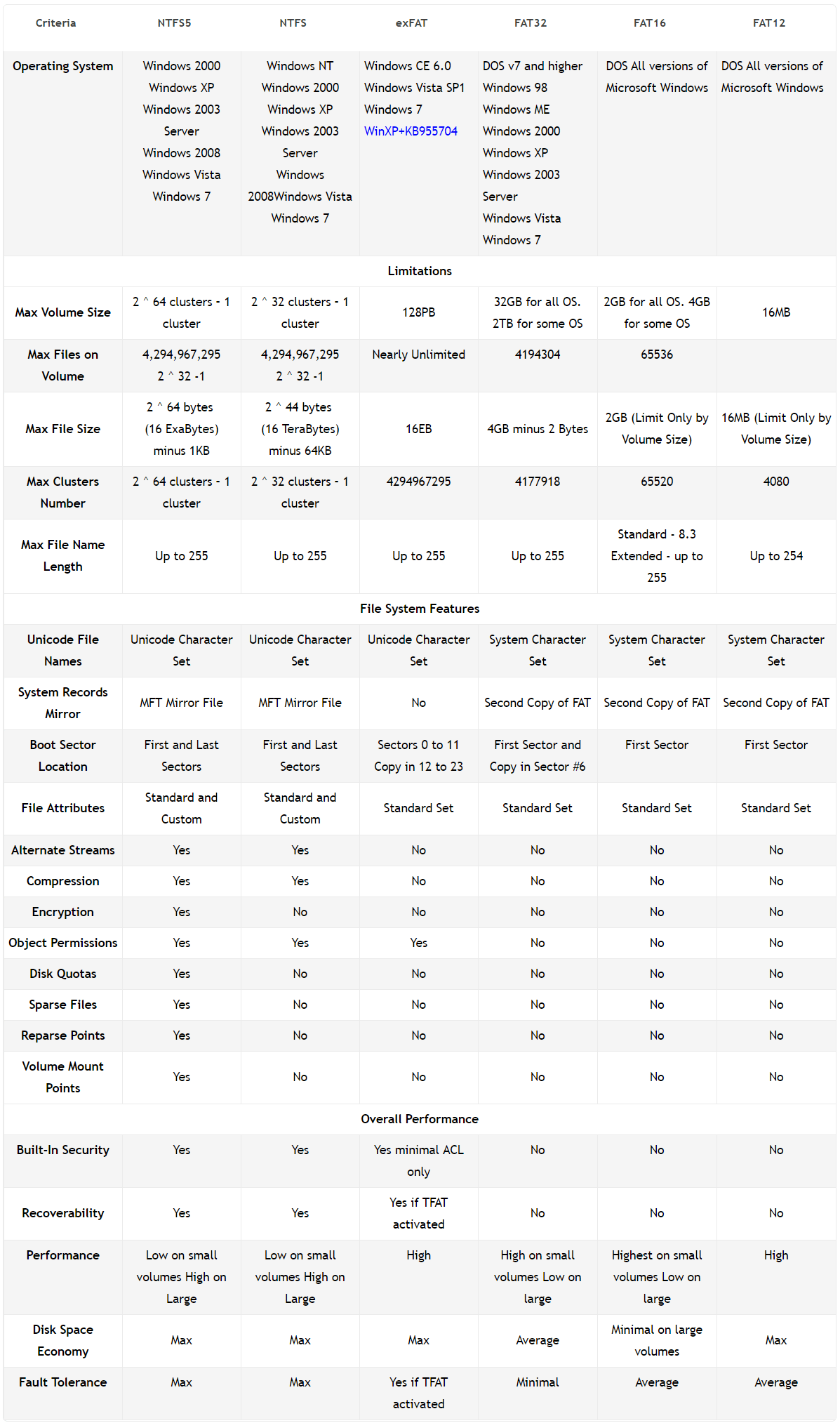
- Exfat or ntfs for mac and windows how to#
- Exfat or ntfs for mac and windows movie#
- Exfat or ntfs for mac and windows Pc#
Exfat or ntfs for mac and windows Pc#
The reason for its ubiquity is that it will work on any PC you plug it into, including both Macs and PCs, Linux boxes, and vintage machines that use USB 2.0. Though Windows file systems work the same regardless of drive type I wanted to expand on his piece a bit by including the system called exFAT, so in this piece I’ll discuss the three file systems, their pluses and negatives, and which one to use according to your needs.įat32: This is the old standby, and the file system that is usually pre-installed on any USB key you buy from the store. My colleague wrote about this previously in regards to external drives, but he was discussing high-capacity hard drives you plug into your PC. In dealing with this it occurred to me that Majid probably isn’t alone, and people might not be aware of the fact that you can format a USB key in Windows using one of three available file systems, and that each system has both advantages and limitations. He sent me a screenshot that clearly indicated the problem, as it read “The file is too large for the destination file system.” I replicated the issue quite easily by trying to move a 10GB file to a Fat32 disk, as Fat32 can’t handle any file larger than 4GB.įAT32 has a 4GB file size limitation, making it tough to copy HD or 4K video footage.
Exfat or ntfs for mac and windows movie#
There is no filesystem that will be ideal for all operating systems, as they were all built differently.Majid was unable to copy a movie from his PC to his newly acquired 32GB USB key, and wondered why. You have to ask yourself, do I need to use those characters, or do I need individual file sizes to be higher than 4GB each. The following reserved characters are forbidden on NTFS files/names: (greater than) Only problem with NTFS is that it does not allow the following characters, which can be a problem on Linux and OSX, but obviously not on Windows:

It also has very limited permission and ACL support for those who need to isolate different users from certain files.

ExFAT has no file system-level encryption or compression support, and, like FAT32 before it, there is no journaling built into the exFAT file system.

The problem with ExFat (even though others suggested it, is the 4GB file size limit.
Exfat or ntfs for mac and windows how to#
NTFS is the most reliable of the three file systems because it is journaled. However, Mac OS has poor NTFS write support. You'd probably have to purchase the Paragon NTFS driver. See How-To Geek: How to Write to NTFS Drives on a Mac. If you add phones to the mix, you'll have to use FAT32 or exFAT. As long as you don't hit the file size limit of FAT32, they're pretty much the same. However, I would not use a drive formatted with FAT32 or exFAT for anything that isn't transient or unimportant. I recently had problems with both file systems on camera SD cards that required reformatting to fix. I don't even want to think about having the same issues with a 2TB hard drive. While you can fix minor problems on all three file systems with fsck, you will have to use MS Windows to fix anything major. Consider splitting the drive into two partitions. A large NTFS partition for data that is more stable, as well as read/write on Windows and Linux. A small exFAT partition to copy files from Mac OS.įAT32. Read/write on all three systems. Not journaled. File size < 4G.ĮxFAT. Read/write on all three systems. Not journaled.


 0 kommentar(er)
0 kommentar(er)
